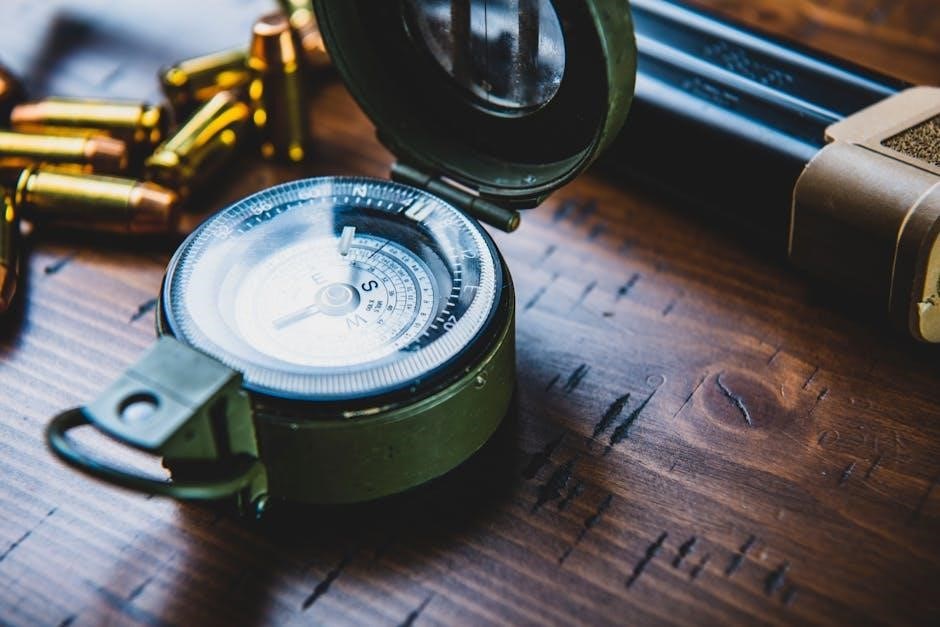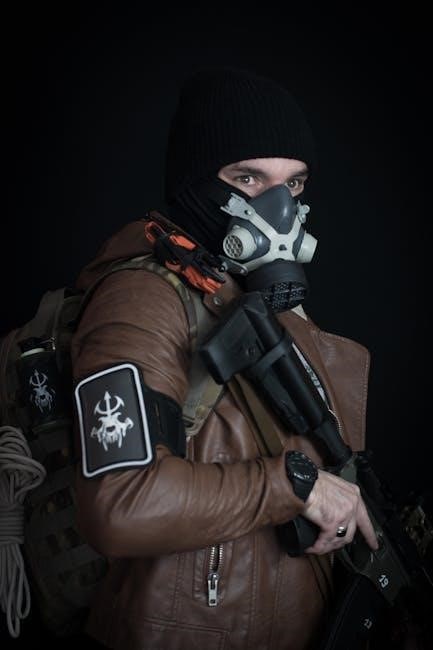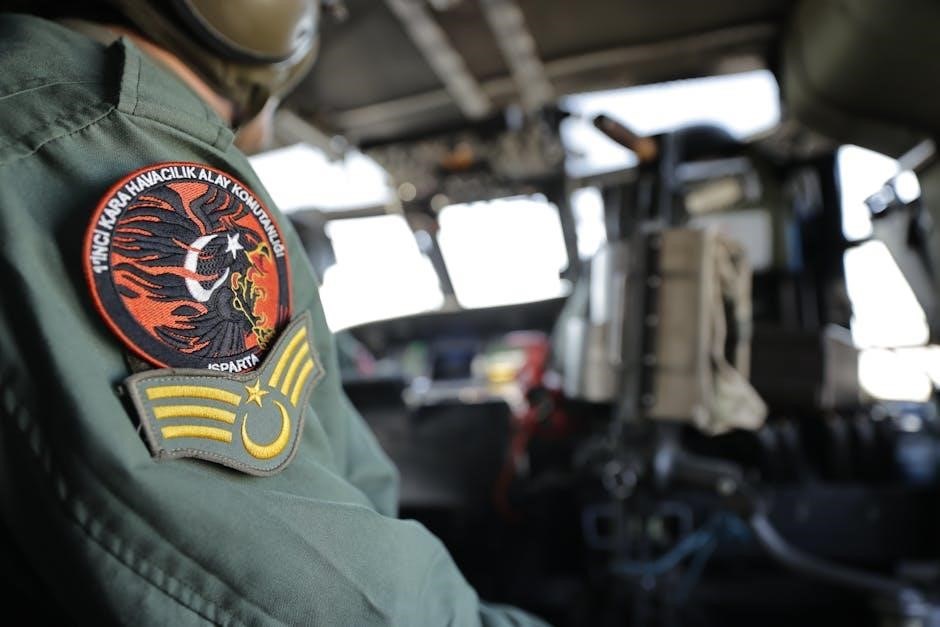Understanding Military Patch Placement Regulations
Proper military patch placement is paramount in the armed forces. This signifies adherence to uniform guidelines, promoting a unified and professional image. Correct placement represents rank, unit affiliation, and branch of service, fostering discipline.
Why is Patch Placement Important?
Military patch placement is more than just aesthetics; it’s a critical aspect of military protocol and identity. Correct placement signifies a service member’s adherence to regulations, fostering a sense of unity and discipline within the ranks. Accurate patch placement immediately communicates vital information about a soldier, including their unit affiliation, rank, and wartime service.
The shoulder sleeve insignia for former wartime service, often called the “combat patch,” is a visual representation of a soldier’s experience and sacrifices. Deviation from these guidelines can disrupt the uniformity and professional image that the military strives to project.
Improper patch placement can lead to disciplinary actions and erode the sense of order and respect within the military community. Knowing why patch placement matters reinforces the importance of attention to detail and adherence to standards in military service. Ultimately, proper patch placement embodies respect, honor, and commitment.
Governing Regulations
Military patch placement adheres to strict guidelines. Army Regulation 670-1 (AR 670-1) is the primary source, with Department of the Army Pamphlet 670-1 (DPAM 670-1) offering further guidance. Air Force and National Guard regulations also dictate standards.
Army Regulation 670-1 (AR 670-1)
Army Regulation 670-1 (AR 670-1) is the cornerstone document that dictates the standards for wear and appearance of Army uniforms and insignia. It serves to ensure uniformity and present a disciplined image across all ranks. This regulation provides comprehensive guidelines on how uniforms should be worn, grooming standards, and the proper display of badges, ribbons, and patches for both enlisted personnel and officers.
AR 670-1 covers a wide array of topics, including authorized insignia, placement of patches, and restrictions on modifications to the uniform. It details the specific criteria for wearing different types of patches, such as the Shoulder Sleeve Insignia (SSI) and the Combat Patch (SSI-FWTS), ensuring that soldiers accurately represent their unit affiliation and wartime service.
The regulation emphasizes the importance of adhering to these standards to maintain professionalism and respect for military traditions. AR 670-1 is regularly updated to reflect changes in Army policy and uniform requirements, making it essential for soldiers to stay informed about the latest revisions.
Department of the Army Pamphlet 670-1 (DPAM 670-1)
The Department of the Army Pamphlet 670-1 (DPAM 670-1) serves as a comprehensive guide that supplements Army Regulation 670-1, offering detailed visual examples and clarifications on the wear and appearance of Army uniforms and insignia. While AR 670-1 establishes the regulatory framework, DPAM 670-1 provides practical guidance for soldiers to correctly implement these regulations.
This pamphlet includes illustrations and step-by-step instructions on how to properly place patches, badges, and other accouterments on various Army uniforms, such as the Army Combat Uniform (ACU) and the Army Service Uniform (ASU). It addresses specific scenarios and provides solutions to common questions regarding uniform wear, ensuring consistency and compliance across the force.
DPAM 670-1 is an invaluable resource for soldiers and leaders alike, offering a user-friendly approach to understanding and adhering to Army uniform standards. Regular updates to the pamphlet incorporate changes in regulations and uniform policies, making it essential for soldiers to stay current with the latest guidelines.

Authorized Patches
Soldiers are authorized to wear specific patches that denote their unit affiliation and wartime service. These include the Shoulder Sleeve Insignia (SSI) and the Combat Patch (SSI-FWTS), each with distinct regulations for wear and placement.
Shoulder Sleeve Insignia (SSI)
The Shoulder Sleeve Insignia, or SSI, represents the Soldier’s current unit affiliation. It’s worn on the upper left sleeve of the Army Combat Uniform (ACU), signifying the command to which the Soldier is presently assigned. This patch is a visual representation of their team and role within the Army’s structure.
The SSI is more than just a patch; it embodies the Soldier’s connection to their unit’s history and mission. Wearing it with pride showcases their commitment to the team and their shared purpose. Regulations dictate specific designs and colors, ensuring uniformity across the force.
Proper display of the SSI demonstrates respect for the Army’s traditions and standards. It’s a symbol of belonging and a constant reminder of the Soldier’s duty to their unit and country. Adhering to these regulations reflects discipline and attention to detail, essential qualities in a Soldier.
Combat Patch (SSI-FWTS)
The Combat Patch, officially known as the Shoulder Sleeve Insignia-Former Wartime Service (SSI-FWTS), is a visual testament to a Soldier’s service in a combat zone. It’s worn on the upper right sleeve of the Army Combat Uniform (ACU), symbolizing their past wartime contributions and experiences.
This patch is a mark of honor, awarded to Soldiers who have served with a unit actively engaged in combat operations against hostile forces. It represents their exposure to the threats of enemy action or fire, either directly or indirectly, during a designated period of conflict.
Wearing the Combat Patch signifies the Soldier’s resilience, courage, and dedication to duty under challenging circumstances. It acknowledges their sacrifices and contributions to the mission’s success. Regulations dictate specific criteria for eligibility and proper wear, ensuring that this honor is bestowed appropriately and with respect.
Placement on the Army Combat Uniform (ACU)
The Army Combat Uniform (ACU) demands strict patch placement. AR 670-1 and DPAM 670-1 govern these standards. Proper placement reflects discipline and respect. Left and right shoulder placements have specific meanings.
Left Shoulder Placement
The left shoulder of the Army Combat Uniform (ACU) is reserved for the Shoulder Sleeve Insignia (SSI), representing the soldier’s current unit. This patch signifies their present affiliation and is worn by all personnel assigned to that unit. The SSI patch is a visual representation of the unit’s identity and history, fostering a sense of belonging and camaraderie among its members.
The placement must adhere to specific guidelines outlined in AR 670-1. It must be centered on the shoulder sleeve, typically about one inch below the shoulder seam. Proper placement ensures uniformity across the force, promoting a professional image. The SSI patch is crucial for identification and distinguishes soldiers from different units. It is a symbol of the unit’s accomplishments and traditions.
Adherence to these regulations is mandatory. Failure to comply can result in disciplinary action. The left shoulder SSI patch is a key component of the ACU and symbolizes a soldier’s current unit assignment.
Right Shoulder Placement
The right shoulder of the Army Combat Uniform (ACU) is designated for the Shoulder Sleeve Insignia-Former Wartime Service (SSI-FWTS), commonly known as the “combat patch.” This patch recognizes prior wartime service and is worn by soldiers who have served in a combat zone with a specific unit. The SSI-FWTS patch is a symbol of their experience and sacrifice during hostile operations.
According to AR 670-1, soldiers are authorized to wear the combat patch of the highest headquarters they were assigned to during their deployment. The patch placement must be centered on the right shoulder sleeve, typically one inch below the shoulder seam, similar to the placement of the current unit SSI on the left shoulder. This placement ensures uniformity and proper display of the combat patch.
Wearing the SSI-FWTS patch is a privilege earned through service in a combat zone. It signifies a soldier’s commitment to duty and their contribution to the defense of the nation. Displaying the patch with pride and respect is essential.

Air Force Patch Placement
Air Force patch placement adheres to specific standards outlined in Air Force Instruction (AFI) 36-2903, “Dress and Personal Appearance of Air Force Personnel.” Patches on the Air Force uniform signify the member’s unit, rank, and qualifications. The proper placement of these patches is crucial for maintaining a professional and uniform appearance.
On the Air Force uniform, the unit patch is typically worn on the left sleeve, while rank insignia is displayed on the collar or sleeves, depending on the uniform type. Patches indicating special qualifications, such as pilot wings or security forces badges, are placed above the ribbons on the left chest. The American flag patch is worn on the right sleeve.
Adherence to these regulations ensures that Air Force personnel present a sharp, standardized image, reflecting the professionalism and discipline of the Air Force. Deviations from these guidelines are not permitted without proper authorization.

National Guard Bureau Patch
The National Guard Bureau (NGB) patch signifies service within the NGB and adheres to specific guidelines. Foreign military service members assigned to the NGB may wear the NGB patch to reflect their unit assignment. This patch is worn in a manner consistent with the corresponding regulations governing Army uniforms, as outlined in Department of the Army Pamphlet 670-1.
Placement typically follows the standards for unit patches, usually on the left sleeve. The NGB patch represents the unique role of the National Guard, bridging federal and state missions. Its proper display is essential for identifying personnel assigned to the bureau and acknowledging their contribution.
Wearing the NGB patch demonstrates affiliation and adherence to uniform standards, reinforcing the National Guard’s professionalism. It also shows uniformity and respect for the organization’s mission.

Restrictions and Changes to Regulations
Military uniform regulations, including patch placement, are subject to restrictions and changes, mandating continuous awareness. The Army Regulation 670-1 (AR 670-1) and Department of the Army Pamphlet 670-1 (DPAM 670-1) are frequently updated, introducing modifications to authorized patches, placement guidelines, and overall appearance standards.
Recent changes have included the removal of duty identifier patches and adjustments to grooming standards. Restrictions may also arise concerning the wear of specific patches based on operational deployments or unit affiliations. Soldiers must remain vigilant about updates to avoid non-compliance, consulting official sources and leadership for clarification.
Ignorance of current regulations is not an excuse; therefore, regular review and adherence to the latest guidelines are critical for maintaining a sharp and respectful military appearance. Staying informed ensures that service members accurately represent their service and unit.
Wearing Patches of Higher Headquarters
Army Regulation 670-1 authorizes soldiers to wear the combat patch, also known as the Shoulder Sleeve Insignia for Former Wartime Service (SSI-FWTS), of their higher headquarters under specific conditions. This insignia is awarded to soldiers who have been deployed and actively participated in or supported ground combat operations against hostile forces.
The units must have faced exposure to the threat of enemy action, either directly or indirectly, and the military operation must have lasted for at least 30 days. If a soldier’s immediate unit did not directly engage in combat, they might be authorized to wear the SSI-FWTS of their higher headquarters that did.
This regulation ensures recognition for soldiers serving in support roles who nonetheless contributed to combat operations. Proper adherence to AR 670-1 is essential when determining eligibility and placement of the higher headquarters’ patch.
